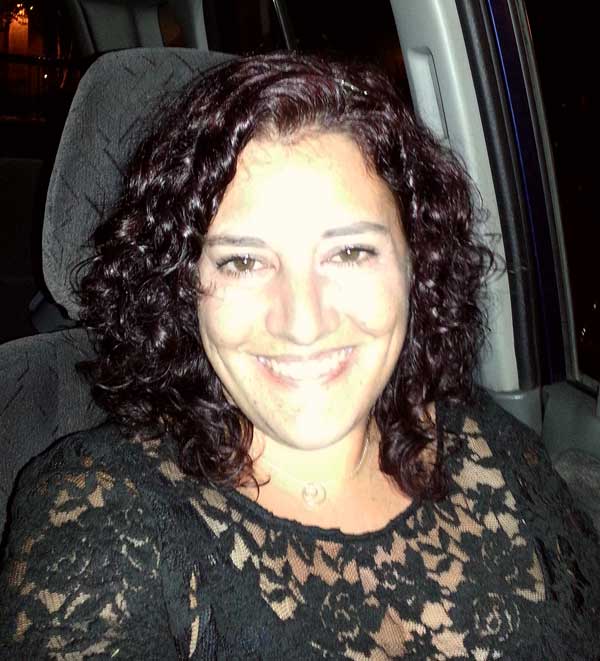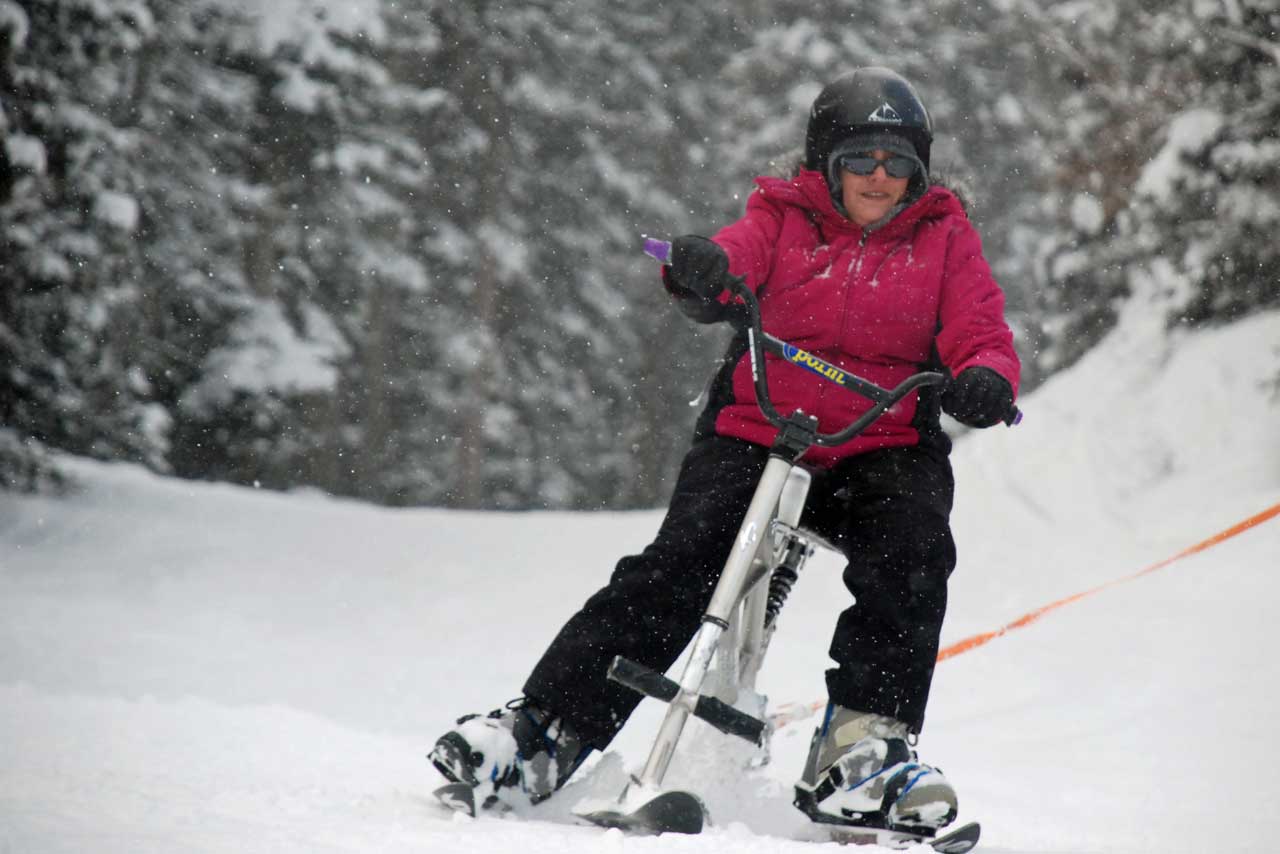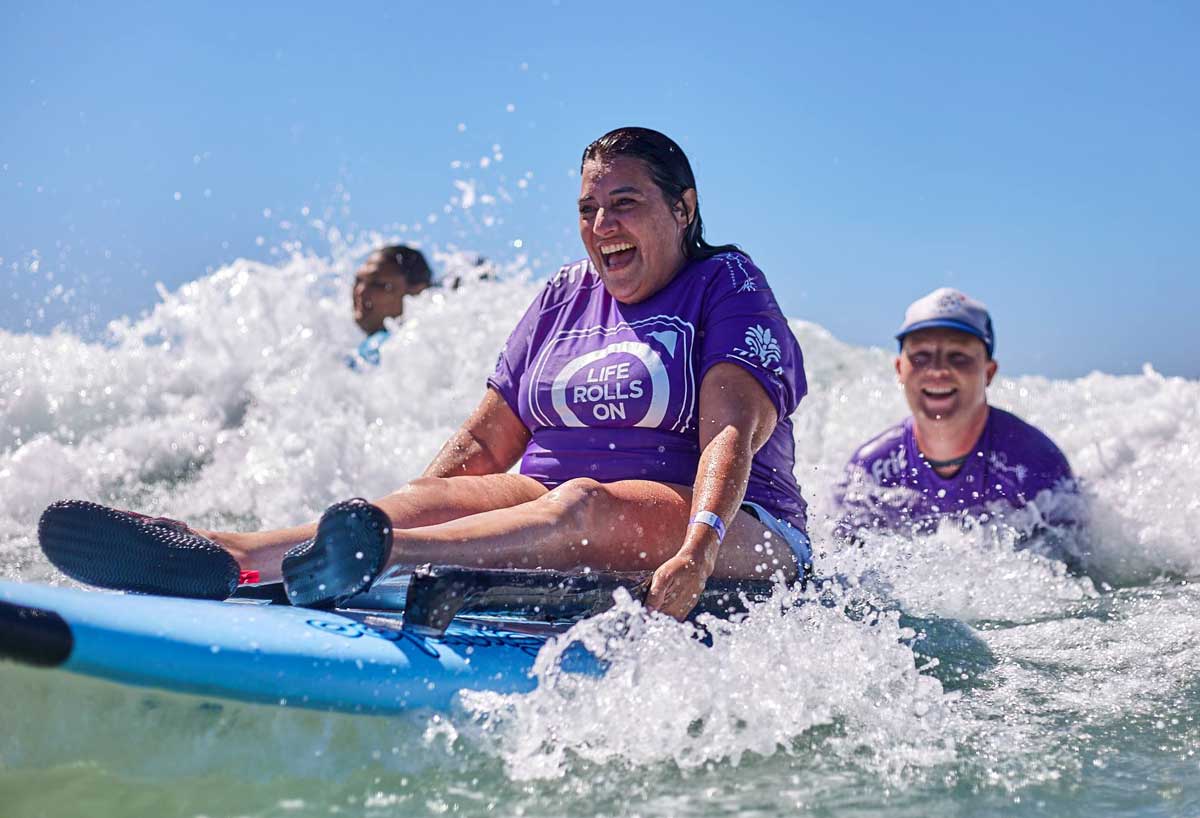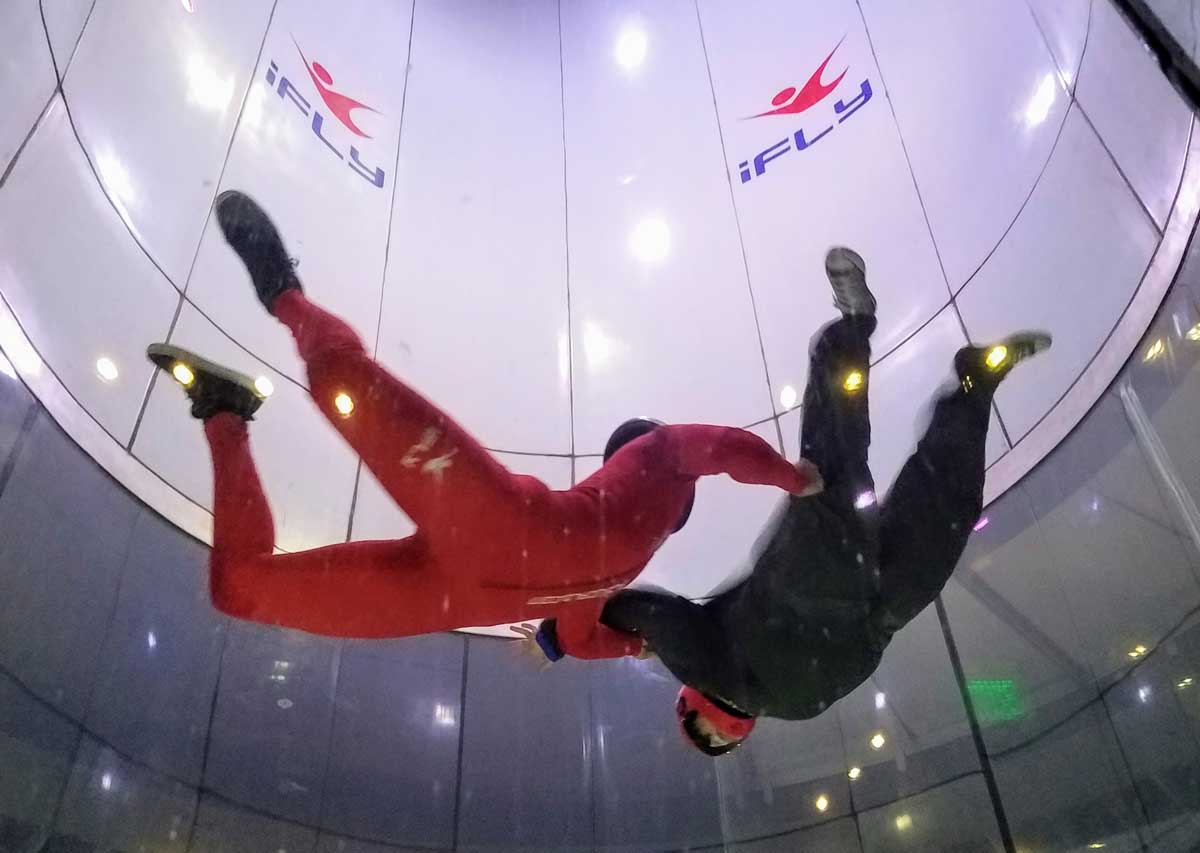Jenn's Story - I Will Find a Way
 Have you ever been told you can’t do something? My name is Jenn and I have Charcot-Marie-Tooth (CMT) Disease, a slowly progressive neuromuscular disorder in which the nerves do not send signals correctly to various parts of the body, and in turn, affects the muscles and nerves in my legs, hands and my spine.
Have you ever been told you can’t do something? My name is Jenn and I have Charcot-Marie-Tooth (CMT) Disease, a slowly progressive neuromuscular disorder in which the nerves do not send signals correctly to various parts of the body, and in turn, affects the muscles and nerves in my legs, hands and my spine.
I felt like I was a typical outgoing kid when I started grade school. The school in our neighborhood happened to be a Physical Education Magnet School. This meant P.E. was a large part of our daily school activities. Where most schools had P.E. once a week, we had ours daily (in addition to recess). We also had mandatory physical challenge requirements and participated in the yearly Junior Olympics.
My parents noticed that I walked on my tiptoes and had difficulties keeping up physically with other kids, but due to my “can do” attitude, they didn’t really see the extent of my issues until I was pushed physically every day at school. My P.E. teacher would constantly tell me to put my heels down. During P.E I was generally picked last by classmates, or put in the back of the performance activities because I could not keep up, or worse, I’d fall down and get hurt. But I always kept coming back! Eventually, my teacher met with my parents and bluntly stated there was something physically wrong with me that required a medical evaluation. I was too young for scoliosis school screening, but she felt my spine was a large factor. It was recommended that I see a pediatric orthopedic specialist at Children’s Hospital, San Diego, who was also a pediatric spine surgery specialist.

So, at age 8, I saw Dr. Dennis Wenger. He shook my hand and announced, “you have Charcot-Marie-Tooth (CMT) disease”. He then told my parents and I that he could tell the moment he saw the “champagne bottle” shape of my legs and felt the weakness in my hand when he shook it. He said I had “classic” symptoms, despite my young age. Along with CMT, x-rays confirmed that I had a spinal deformity, specifically Kyphoscoliosis in my chest region, causing me to bend forward.
This started what became a life-long journey for me. All at once, I was put in leg braces, ankle/foot braces (AFOs) and a Milwaukee spine brace. Needless to say, the sight of all this equipment was scary, and especially out of place in a school that placed such emphasis on physical education. People weren’t always outright mean, but they weren’t kind either. Despite the general ugliness of students and sometimes adults, my parents taught me early that I had to face the fact that I had these challenges, accept them, and become a better person for it. At a young age, I wondered, if my classmates understood my physical challenges would they be more understanding and nicer to me? Could they be better people too? To me, the obvious answer to this question was YES! And, by helping others learn about and accept my differences, I could do the same!
To say I was determined was probably an understatement. If I was told (mostly by doctors) that I would not be able to do something, I would specifically make an extra effort to find a way to do that activity. I had a big personality and I wanted to be included in everything! But, I found it was difficult for my classmates, and people in general, to understand my condition, or that those things wouldn’t stop me. My parents both understood my frustration and wanted to help. My mom started by taking me to the library to find all the books I could on Scoliosis: Medical, fiction, weird facts, anything that could help me and others understand better. We presented our research report to my 3rd grade class in a fun but informative way. We talked about scoliosis, why I wore a back brace and why the acceptance of other’s differences was so important. We even encouraged my classmates to try on my brace and gave scenarios of tasks to do while wearing it. The first time my mom largely did the presentation and I answered questions. But as we did more, I became more confident and became more involved with the presentation. It was empowering to have this knowledge and share it with others. This was the foundation of what I would later do in life.
With the reality of my physical disabilities and resulting limitations, my school tried to have me sit out of what would otherwise be mandatory physical challenges to advance to the next grade. They held yearly “Junior Olympics” but insisted that I need not participate. To me, this was unacceptable! I decide what I can and cannot do! I will find a way! So, I signed up for the shortest duration event available, the 50-yard dash. At the time, I was in full leg and body braces. When the race started, I took off running. Have you seen the movie ‘Forest Gump’? Well, I had that “Run Forest Run” moment way before the movie ever aired. One by one, each leg brace and my back brace broke in multiple locations, but I just kept running!! I finished the race dead last, but I didn’t care. At the end of the day, I had accomplished something I was told I could not do and that was huge for me. I was quite proud of myself.
The CMT caused my feet to have weakness and deformities that prevented me from putting my heel down when I walked. At age 8, I underwent foot/ankle surgery to increase the range of motion in my ankles. After wearing a Milwaukee brace for over 2 years, it was evident that the brace was not preventing the abnormal curve from increasing, so at age 10, I had 2 major spine surgeries a week apart to attempt to stop my spine deformity from worsening.
At age 11, I developed a late infection of my spine. So back to the operating room, I went to have my spinal rods removed and the infection treated. While there, the doctors attempted to address what appeared to be the beginning of kyphosis, at the base of my neck, above my old spine surgery. And then, at age 12, I had more surgery on my legs to help improve my function.
At this time, the internet was barely known and there were certainly no websites or social media to find support groups or others like me. And I certainly wasn’t going to find anyone like me going into Junior high. I missed half the year after being homeschooled following surgery. I faced starting a new school late in the year and with no real friends. I knew I’d have issues with the kids because of my limitations, so I spoke with the school nurse to see if we could replicate the sessions we did in grade school so my classmates could understand me better. She was impressed that I already knew how to present and was confident in answering questions. But she knew that Jr. High students were “too cool” to listen to me. To her credit, the nurse suggested it would be better to go back to the elementary school-age kids, as they would still listen and learn. These trips to elementary schools became my version of a field trip with the nurse and I giving the talk together. This is what helped me get through the emotional/mental part of it. If I couldn’t help me, at least I could help other people.
In Junior High and High School, I was bullied a lot. Although I no longer wore back or leg braces, I still couldn’t always keep up with my classmates, and I definitely couldn’t participate in P.E. A small but vocal group of bullies followed me throughout High School focusing on my kyphosis curve and calling me Igor. They would even walk or drive up and down my street calling out that name late at night. And this continued right up to college. I would never let them know they got to me, but at home, I’d break down. My family was always there for me and were very supportive. My parents did try talking to the school and some of the bully’s parents, but ultimately it just made things worse. I just continued to deal with it by doing my best to ignore their ignorance and continue trying to help others.
Starting around age 14-16, I still was trying to reach out to people who were like me. I never met anyone like me, with CMT or Scoliosis. I had a few good friends, and they were great and supportive, but ultimately, they didn’t really understand the things I was going through. I tried to act as normal as possible around them. If they wanted to go to a place or event I couldn’t manage, I would suggest something else, or make excuses without stating why. Again, there was no social media, barely any internet, so there were no resources to help me.
At this point, we did not understand how my CMT progressed, and my scoliosis was the main issue for me. Because of the severity of my curves and the early findings of my CMT, well-meaning doctors and teachers would tell my mom that I would be in a wheelchair by the time I was 18, I would not live on my own and would always be dependent on others for the rest of my life. My mom refused to believe this (and refused to let me believe this). She always brought my hard-earned achievements to my attention. My parents and I continued to work on how to personally own and deal with issues. If I wanted something, they told me to go for it! I always tried to do things on my own, and then if I still couldn’t do it, I’d ask for help.
Finally, I graduated from high school. I had been involved in drama from a very young age and continued with it semi-professionally after graduation. Over time, because of my physical limitations, I would not be able to get parts. I had always been told and taught that if I wanted something, I could make it happen, despite my limitations. So, coming to this realization was very hard on me. I struggled to find my passion and place again.
Looking for a new outlet, I chose to take a Black and White Photography Darkroom class at community college. My mom gave me her dad’s camera, a Minolta X-700, and found a new way to express my creativity and artistry. I was unsure of this new class and concerned that my physical limitations would hinder me from being “good”. Slowly I began to realize that people only saw the photograph and not all the work it took to get that shot. When they saw my photos, they didn’t see any limitations or difficulties, they only saw the finished product, It was an amazing thing for me to learn, so, photography became a lifeline. I started going on photo trips with other photographers. I couldn’t always physically keep up or do some of what they did to set up shots. It forced me to slow down, learn to look at where I am, what is around me and to find my best shot, regardless of where others find it.
On one such trip, I was in Death Valley at the Kelso Dunes and we all headed out to get those perfect empty dune shots. I knew what I planned to shoot, and what I wanted to shoot and slowly realized that no matter how hard I tried, I was NOT going to make it to my planned destination. All at once, I was angry and sad! I sat at the top of the largest dune I had managed to climb while the others went ahead, and allowed myself a small pity party. I knew I wasn’t going to quit but I was so frustrated! Slowly I took in what was around me. Since I was already sitting, I laid down in the sand, and took a couple of pictures. I took my time walking back from the dunes back to the car finding little things to photograph along the way that I had taken for granted in my hurry to obtain that dream shot in my head. I later discovered that some of those pictures were the best I had taken on the trip! I got shots and angles that I hadn’t considered because I was too focused on getting to where everyone else was headed. My differences and frustrations had given me the opportunity to find a unique perspective. Mine. That was an important moment for me. And, I had something I was passionate about again!
With my life experiences and my ongoing acceptance of myself, I realized that I wanted to work harder toward being there for someone else in need. So, I started looking for support groups through the emerging internet websites. I found the Scoliosis Association National Chapter and then looked for a chapter around me. There wasn’t any in San Diego, but there was a chapter in Orange County. I contacted the O.C. chapter leaders, Norm, and Judith Lipin. They helped me get my chapter organized and my first meeting set up. I didn’t know what I was doing, but they helped me tremendously. At this point, I was in my early 20’s.
That’s how I began meeting people with scoliosis. I reached out to Children’s Hospital, and its doctors, to expand our group’s resources. Our first meeting was held at a library. We often had speakers, usually local physicians. In addition to 4 formal meetings a year, we’d have intermittent fun “get-togethers” and picnics. This also was the genesis for our “Curves are for Cars” fundraiser. My family and I are car fanatics, so I grew up in that environment. It was a natural thing to combine our Scoliosis group and Classic Cars. The event was fun and successful and it grew each year, with a run of 5-6 years when we retired the event. We offered scoliosis screening for those seeking it and all the money raised went to local scoliosis-related research. After 8 years, I eventually stepped away from running the Scoliosis Association San Diego Chapter, but I learned a lot about nonprofits, running support meetings and fundraisers and more importantly, met and supported others like me.
So, where am I at this point in my life? I’m constantly learning to accept myself and adapt. Having Neuromuscular Scoliosis and CMT means constantly adjusting and adapting to the new me. Both of my conditions continue to progress, so I’m being followed by Dr. Mundis and Dr. Konnersman to determine the best courses of action for my future. Some days are harder than others, but I keep going. I try to look for goals and for positives. I’ll find something I’d like to do and just go for it. Sometimes it works out, and sometimes it doesn’t but at least I know I always try!
This outlook has led to being involved in various adaptive sports and the Challenged Athletes Foundation. My first sport was wheelchair soccer. Not only being on a team but playing aa a valuable member of that team was something I had never had before! It opened up a whole new world to me and I have now been a part of many different adaptive sports including adaptive skiing, adaptive surfing, hand cycling, sitting volleyball, and wheelchair tennis. I may not be able to ski upright on my feet, but I can ride a ski bike! And I may not stand on a surf board, but I’m riding that wave......

Finding joy is very important to me. I am constantly trying to learn, accept and adapt to the new me. I will find a way!!

Jenn’s story is especially dear to San Diego Spine Foundation. You’ll find Jenn acknowledged at the end of the 2019 Annual Report, as she has been for years, as an important volunteer for our organization. Jenn volunteers her time with SDSF as a photographer and her personality and laughter are infectious.
